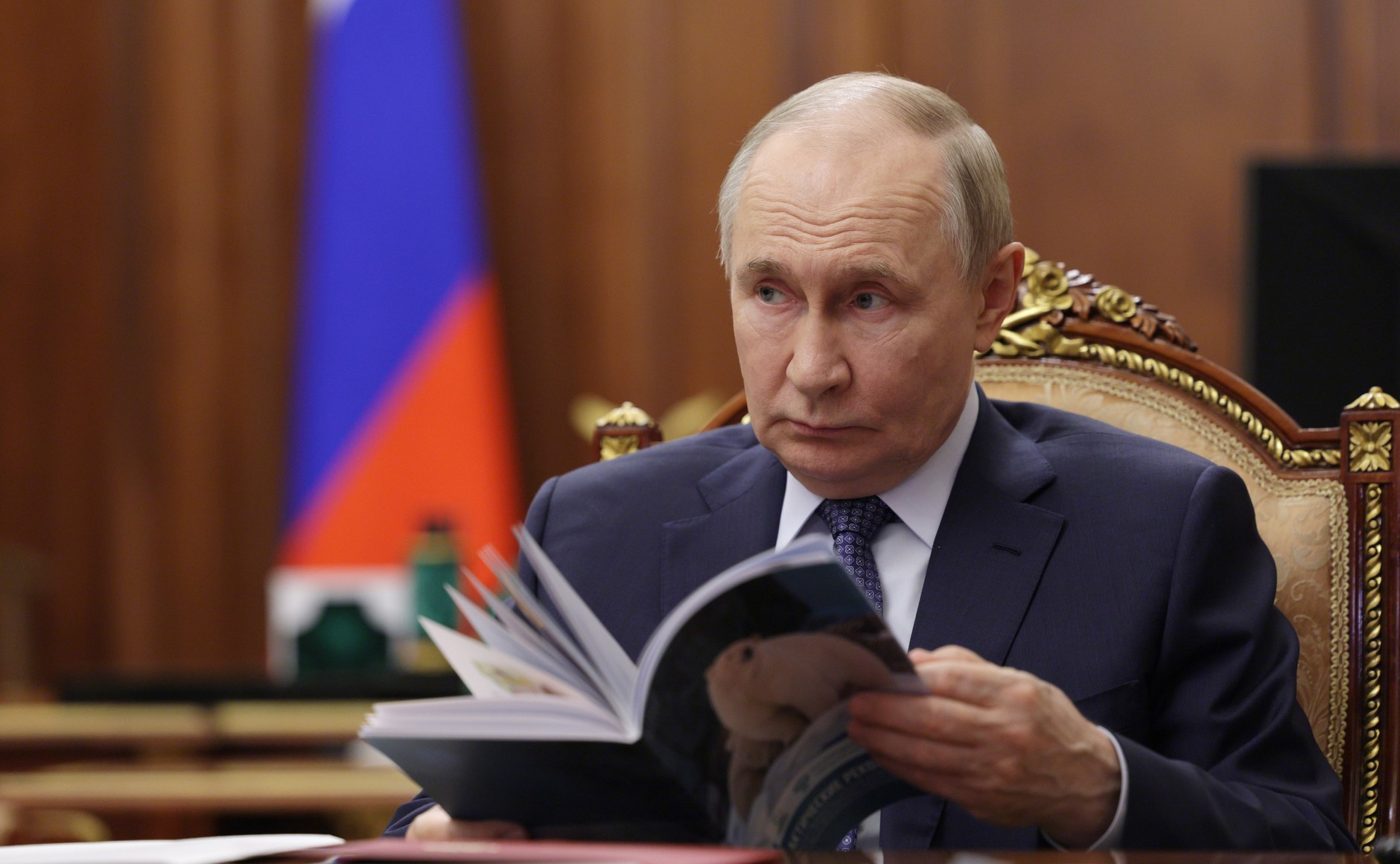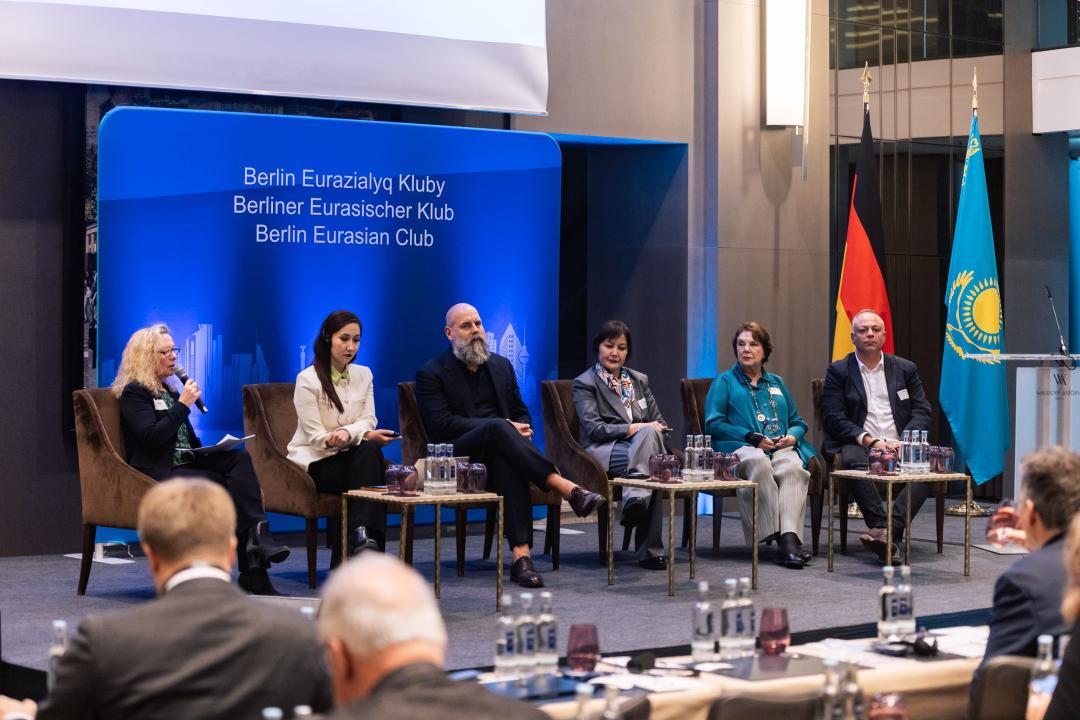diplo.news
Putin's bag of tricks
Column by Michael Backfisch

In the Ukraine war, US President Donald Trump is pursuing a rollercoaster policy. First, he insults Russia as a “paper tiger” and threatens to deliver Tomahawk cruise missiles to Ukraine. Then, in a telephone call with Kremlin leader Vladimir Putin on Thursday last week, he lets himself be sweet-talked for two hours. Ukrainian President Volodymyr Zelensky is received by Trump at the White House a day later and sent home empty-handed. No Tomahawks, no new weapons, was the message in Washington. Suddenly, a Trump-Putin summit in Budapest was supposed to provide the magic solution to end the conflict. As if the completely fruitless cosy meeting in Alaska in mid-August had never taken place.
And the rollercoaster ride continues. On Monday, US Secretary of State Marco Rubio and his Russian counterpart Sergei Lavrov had what was described as a ‘productive’ telephone conversation. A face-to-face meeting between the two was to follow later this week to prepare for the Trump-Putin summit. On Tuesday, the White House backtracked. No summit meeting in the ‘near future’ is the succinct message. "I don't want a wasted meeting," Trump adds.
No conclusive reason for the diplomatic rift was provided. But it was obviously understood in Washington that the Americans' and Russians' ideas about ending the war were too far apart. Trump wants to freeze the front line in Ukraine. After that, Moscow and Kiev should “stop the killing and make a deal,” the US president recommended in a nonchalant tone. “Let them both claim victory, let history decide.”
Moscow responded with a loud “Njet”. Russian Foreign Minister Sergey Lavrov railed that the "causes of this conflict" must not be forgotten. The Trump proposal would mean "that a huge part of Ukraine would remain under the leadership of a Nazi regime," the minister said. The fall of Zelensky and the government in Kiev is a declared war goal for Moscow. Zelensky, on the other hand, believes that Putin only held on Trump with the idea of the Budapest summit: “As soon as the (American) long-range weapons (Tomahawk) have moved into the distance, Russia has automatically lost its interest in diplomacy,” he explained in a video message.
Is Trump just angry because his push for a ceasefire fizzled out? Will he threaten Putin again with the supply of weapons like Tomahawks, which the Europeans will then pay for? Or does he let himself be wrapped up again by the head of the Kremlin — as is so often the case?
In the past, Putin has repeatedly managed to get Trump to fall for his tricks. He has a wide range of manipulation techniques, which he acquired during his time as a KGB officer in Dresden and as director of the domestic intelligence service FSB. Camouflage, deceiving and throwing smoke grenades are among his favorite instruments. He also occasionally varies this with chameleon-like behavior: He mirrors the position of his counterpart in order to give him the feeling that both are on the same wavelength. Putin uses the KGB tactic of “reflexive control.” The aim is to provide your opponent with targeted information in order to get him to make a specific decision — exactly the one you want.
Putin adopted Trump's idea of a ceasefire in Ukraine several times — only to overload it with fundamental conditions later. In March, Trump made his first push for a ceasefire. Ukraine agreed immediately. The Kremlin leader initially welcomed the initiative and then linked it to demands that would have meant Ukraine's surrender. This initially involves demilitarization, no NATO membership, a Moscow-friendly government in Kiev and the surrender of territories. Above all, however, there is a major strategic goal, which the Russians formulated in memorandums to NATO and the USA in mid-December 2021: The eastward expansion of NATO, which began in 1999, is to be reversed, and American troops should leave Europe.
According to media reports, Trump acted as Putin's mouthpiece at the recent tête-à-tête with Zelensky: He allegedly called on the Ukrainian to cede the entire Donbass to Russia. For the invaded country, this would be a deadly compromise. The Donetsk region, which the Russians were unable to completely conquer in more than three and a half years of war, is home to strategically important Ukrainian defensive positions. If they were to hand them over, Putin's troops could march all the way to Kiev at will.
Before the Alaska summit with Putin on 15 August, Trump had advocated for a ceasefire in the Ukraine war – Europeans thought they had reined in the erratic White House chief. But the Russian managed to turning the American around and make the prospect of a one-on-one meeting between Putin and Zelensky palatable to him. Instead of a ceasefire, the ultimate peace package, according to the tempting offer. The Kremlin chief knows that Trump wants to be celebrated for bringing the war to a quick end – even if this is at the expense of Ukraine. His calculation: since the American is in a hurry, the likelihood increases that he will adopt Moscow's narrative and force Zelensky to give up. If Trump does not (yet) agree to this, Putin will at least have gained time to continue his war of attrition. The fact that Alaska fizzled out after much fanfare does not hurt him.
The Russian has also mastered the art of flattery. At the start of the last conversation, he effusively congratulated Trump on his peace plan for Gaza. You might think this is banal. But when the powerful of this world seek a personal connection with Trump, this has an effect, even if this is only for tactical reasons. Putin has always avoided criticizing Trump, praising him as “clever,” “talented,” and “pleasant interlocutor.” The Russian President is deliberately playing with the illusion that global political conflicts could be resolved by an alliance of strong men. This impresses former New York real estate agent Trump, who is sympathetic to the idea of backroom deals between autocrats. For him, international law and treaties are nothing more than a distracting backdrop.
Last but not least, Putin is working on an old dream. He is not just doing everything he can to widen the gap between the USA and Europe. America has recently been wooed, and Ukraine supporters between London and Warsaw are demonized as a collection of warmongers. The Russian president is even dividing the EU countries by persuading Trump to join the summit in Budapest. Of all places, the city that is home to the seat of government of Hungarian Prime Minister Viktor Orbán, who repeatedly fires broadsides at Brussels and cosies up to Putin, is to become the great platform for peace. Trump does not realise how he is being exploited by Putin.
In the Gaza war, the US president succeeded because he put pressure on Hamas and Israel and included the Arab states. In the Ukraine war, he must set limits on the aggressor Russia. Daniel Fried, former US Ambassador to Poland and head of Europe in the White House under President George W. Bush, sums it up: “The question is whether and when Trump will understand that he must put pressure on Putin to get the desired results. Putin plays with him again and again. “If Trump doesn't heed this, the war will go on an endless loop.



.jpg)
